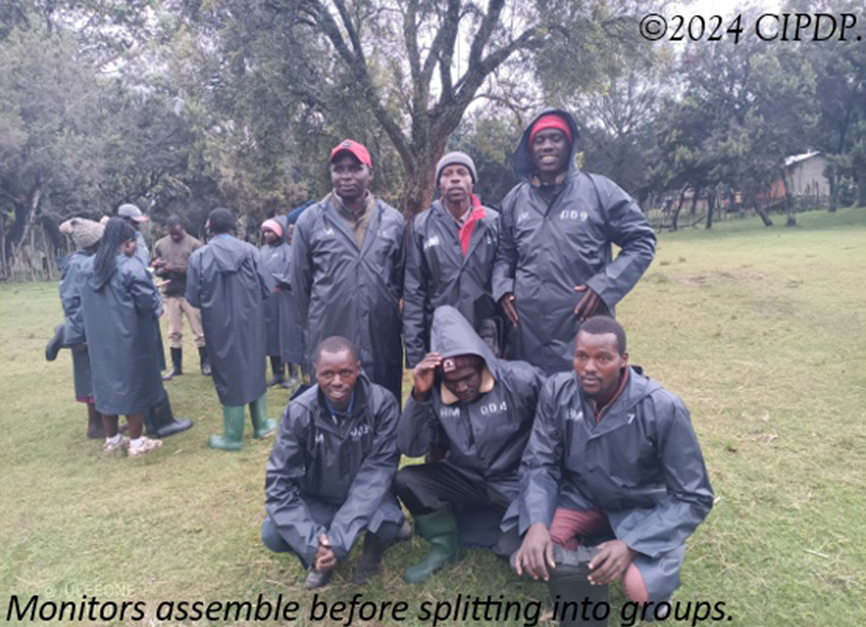After a series of indoor training and field practical together with elders, the monitors have gained skills to enable them collect data. With past experience on the use of mapping tool which is mastered by some of the monitors, the community is now applying the acquired skills to record monitoring data that can be easily accessed by elders to assess the health and availability or resources.
The Ogiek Chepkitale in Mt. Elgon region have started biodiversity monitoring trials. A team of 17 community volunteers (who included 11 men and 6 women) carried the biodiversity monitoring activity.
The trial is final part of monitoring preparations before the actual biodiversity monitoring expected to be launched in September 2024.
Type: Blog
Region: Africa
Country: Kenya
Theme: Biodiversity monitoring, Community-led conservation and Traditional and local knowledge
Partner: Chepkitale Indigenous Peoples Development Programme (CIPDP)

Monitors assemble before splitting into groups.
The first trial targeted Laboot region, with line transect monitors covering a stretch of over 27 km from a point close to the peak of Mt. Elgon down to the edge of the forest in 5 days. The Line transect team recorded evidence of plenty of wild animals close to the peak and by the time they were on the lower forest zone, they found elephants and others wildlife.
At the end of the first session of the Laboot zone trial, Isaiah Lang’at, a member of transect team, had this observation “I have been watching the peak from a distance, but the monitoring activity has enabled me to reach close to the peak. We saw footprints and droppings of small wild animals.” The monitors came back with stories about the beautiful sceneries of open moorland with short trees, shrubs and grass – home to a number of animal species.

David Kwalia, a community monitor, encounters elephants during biodiversity monitoring trials
Isaac Kesis, an experienced community scout, who was leading the team, had to apply the indigenous knowledge on how to study the direction of flow of wind, move closer without the elephants noticing and waved to his colleagues to move.
During training sessions, safety of the monitors was given priority and this was to apply at any point in their monitoring work. In case of an accident and a monitor gets injured, the necessary first aid assistance to be offered by the team members.
The forest zone gave the transect team challenges like impenetrable vegetation, deviations from the line due to poor GPS location, heavy rain and presence of elephants. Despite these challenges, the monitors managed to continue with their work till the final point at the edge of the forest.
Women were not left behind in biodiversity monitoring. Two teams, led by women, headed to the lower bamboo zones to monitor identified target sites. In one of the sites, they noted some recent cutting of bamboos and a lot of damage on the bamboo shoots caused by elephants.
On their way to the sites, they were encouraged to observe intact bamboo zones. The weather was favorable, with little rain towards afternoon extending to evening, but on the second day, there were incidences of heavy rain as the quadrat team encountered elephants. For safety of the monitors, the women avoided the site with elephants and moved to another quadrat.
The third team mounted the camera traps on identified sites with abundance of wildlife. One camera recorded an elephant passing in front of it and a moving (characterized by reflective eyes) small wild animal spotted at a distance.
It is routine for every community member to give oral story of status of what they have observed on the way whenever they meet each other. Now with use of technology to capture data, the oral updates will be backed with evidences. These preliminary data and many more to come will enrich the oral stories about the health of our resources and land.
We thank the monitors for their time dedicated in collecting information in this first community monitoring work, and we expect more that will be shared to community leadership structures and also lessons learnt with the community and other conservation stakeholders.
We thank the FPP and ICCS teams for their technical assistance and we expect more results from the biodiversity monitoring work.




